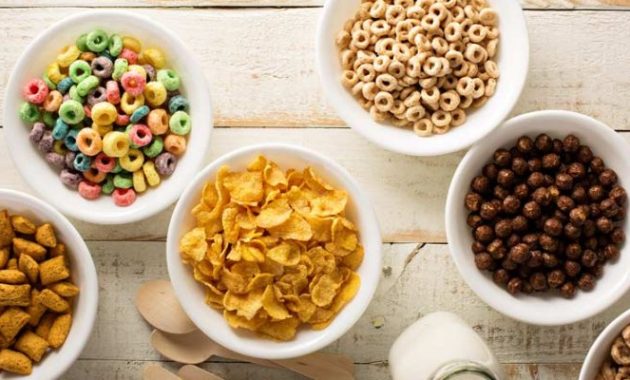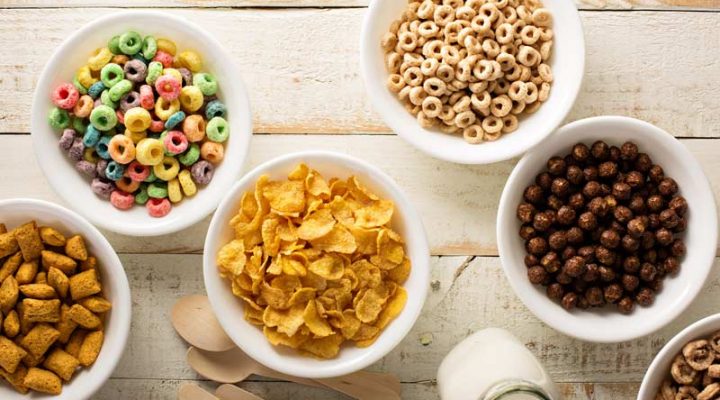
How to Choose Breakfast Cereals That Fit Diabetes: A Guide to Healthy Mornings
The morning rush. It’s a familiar scene for many. You need a quick, convenient breakfast before heading out the door. For those managing diabetes, the choice of breakfast cereals becomes particularly crucial. The wrong cereal can lead to a rapid spike in blood sugar levels. This can cause a cascade of negative effects on health. This guide provides a comprehensive look at how to choose breakfast cereals that fit diabetes, empowering you to make informed choices. It will help you start your day right.
Understanding the Impact of Breakfast Cereals on Blood Sugar
Breakfast cereals often contain carbohydrates. These carbohydrates are broken down into glucose. Glucose is the primary source of energy for the body. For people with diabetes, the body either doesn’t produce enough insulin or can’t use it effectively. Insulin is the hormone that allows glucose to enter cells. This is where it can be used for energy. This can lead to high blood sugar levels. Therefore, the type and amount of carbohydrates in your cereal are important.
The Glycemic Index (GI) and Glycemic Load (GL) are important tools. They help assess how quickly a food raises blood sugar. The GI ranks foods on a scale of 0 to 100. This is based on how they affect blood sugar levels. A high GI indicates that the food causes a rapid spike. A low GI suggests a slower, more gradual rise. The GL takes into account both the GI and the amount of carbohydrates in a serving. This provides a more realistic measure of the impact on blood sugar.
Key Factors to Consider When Selecting Cereals
Choosing the right cereal involves careful consideration of several factors. These factors go beyond just taste and convenience. Understanding these elements is key to managing blood sugar effectively. Let’s break down the essentials of how to choose breakfast cereals that fit diabetes.
Carbohydrate Content and Fiber
The total carbohydrate content is a primary concern. It directly influences blood sugar levels. Aim for cereals with a moderate carbohydrate count per serving. Fiber is a crucial component. It slows down the digestion and absorption of carbohydrates. This prevents rapid blood sugar spikes. Choose cereals with at least 3-5 grams of fiber per serving. Look for whole grains as the first ingredient. They are naturally higher in fiber.
Sugar Content
Excess sugar is a significant concern. It can worsen blood sugar control. It contributes to weight gain and other health issues. Carefully review the nutrition label. Pay close attention to the added sugars. Added sugars include ingredients like sucrose, high-fructose corn syrup, and dextrose. Select cereals with minimal added sugars. Aim for less than 6 grams of sugar per serving, ideally even less. Natural sugars from fruits are acceptable in moderation.
Ingredient List and Processing
The ingredient list reveals the composition of the cereal. This will tell you how it is made. Prioritize cereals with whole grains, such as oats, wheat bran, or brown rice, as the primary ingredient. Avoid cereals that are highly processed. They often contain refined grains, added sugars, and unhealthy fats. Look for cereals with minimal processing. This helps maintain more of the natural nutrients and fiber.
Serving Size
The serving size is critical. It determines the amount of carbohydrates, sugar, and fiber you consume. Carefully measure the recommended serving size. This ensures you’re getting an accurate assessment of the nutritional content. It is also important to adjust your portion sizes. This can help you meet your individual dietary needs and blood sugar goals. Using a measuring cup or scale is helpful.
Cereals to Consider and Cereals to Avoid
Navigating the cereal aisle can be tricky. Knowing which cereals are generally suitable and which ones to avoid is helpful. This knowledge will help you when you are learning how to choose breakfast cereals that fit diabetes.
Generally Suitable Cereals
- Oatmeal: A classic choice. Oatmeal is high in soluble fiber. It helps slow down the absorption of glucose. Choose plain oatmeal or steel-cut oats. Avoid pre-sweetened instant oatmeal.
- Bran Cereals: High in fiber and low in sugar. These cereals can aid in blood sugar control. They promote digestive health.
- Whole-Grain Cereals: Look for cereals made with whole grains. They offer a good balance of carbohydrates, fiber, and nutrients.
Cereals to Approach with Caution or Avoid
- Sugary Cereals: These are often marketed towards children. They are loaded with added sugars. They can cause rapid blood sugar spikes.
- Refined Grain Cereals: Made with white flour or other refined grains. These have a higher GI and lower fiber content.
- Granola Cereals: While often perceived as healthy, granola can be high in sugar and calories. Read the label carefully. Choose varieties with minimal added sugar and healthy fats.
Reading and Understanding Nutrition Labels
The nutrition label is your best friend when selecting cereals. It provides essential information to make informed decisions. Here’s how to decipher the label effectively. This is a key aspect of how to choose breakfast cereals that fit diabetes.
Serving Size and Servings Per Container
Start by checking the serving size. Note the number of servings per container. The nutritional information on the label is based on the serving size. Adjust your calculations accordingly if you eat more or less.
Total Carbohydrates and Fiber
Look at the total carbohydrate content. Pay attention to the fiber content. A high-fiber cereal is beneficial. It helps slow down the absorption of glucose. Subtract the fiber grams from the total carbohydrates. This gives you the net carbs. Net carbs represent the carbohydrates that will impact your blood sugar.
Sugars and Added Sugars
Review the total sugars. Then, look for the amount of added sugars. Minimize added sugars. These can significantly affect blood sugar levels. Choose cereals with minimal or no added sugars.
Ingredients List
The ingredient list reveals the components of the cereal. Prioritize cereals with whole grains as the first ingredient. Avoid cereals with refined grains, added sugars, and unhealthy fats. The ingredients are listed in descending order. This is by weight. The ingredients that are listed first have the highest proportion in the cereal.
Tips for Incorporating Cereal into a Diabetes-Friendly Diet
Choosing the right cereal is just one step. Incorporating it into a balanced meal plan is important. Here are some tips for managing diabetes through your breakfast choices. This is the final step in how to choose breakfast cereals that fit diabetes.
Pair with Protein and Healthy Fats
Combine your cereal with protein and healthy fats. This can slow down the absorption of glucose. It also helps to keep you feeling full longer. Add a handful of nuts, a serving of Greek yogurt, or a boiled egg to your breakfast.
Control Portion Sizes
Even healthy cereals can impact blood sugar levels if eaten in excess. Carefully measure your portion size. This ensures you’re consuming an appropriate amount of carbohydrates. Use a measuring cup or scale to stay on track.
Monitor Blood Sugar Levels
Regularly monitor your blood sugar levels. This is crucial for diabetes management. Check your blood sugar before and after eating cereal. This can help you understand how it affects your body. This knowledge will help you adjust your choices.
Choose Dairy or Non-Dairy Milk Wisely
The type of milk you choose can impact your blood sugar. Opt for unsweetened almond milk, soy milk, or low-fat dairy milk. Avoid sweetened milk alternatives. These can add extra sugar to your breakfast.
Consider Adding Fruit in Moderation
Fruit can add sweetness and nutrients to your cereal. Be mindful of the carbohydrate content. Choose fruits with a lower GI. Berries are an excellent option. Avoid large portions of high-sugar fruits like bananas or mangoes.
Conclusion
Choosing breakfast cereals that fit diabetes requires careful consideration. Focus on carbohydrate content, fiber, and sugar levels. Prioritize whole-grain options with minimal added sugars. By understanding nutrition labels and making informed choices, you can enjoy a healthy and satisfying breakfast. This will help you effectively manage your blood sugar levels. This guide has shown you how to choose breakfast cereals that fit diabetes. You can start your day with confidence.
[See also: The Best Diabetes-Friendly Lunch Recipes]
[See also: Understanding the Role of Exercise in Diabetes Management]
[See also: The Impact of Stress on Blood Sugar Levels]
By following these guidelines, you can confidently navigate the cereal aisle. You can also build a diabetes-friendly breakfast routine. This supports your overall health and well-being.

